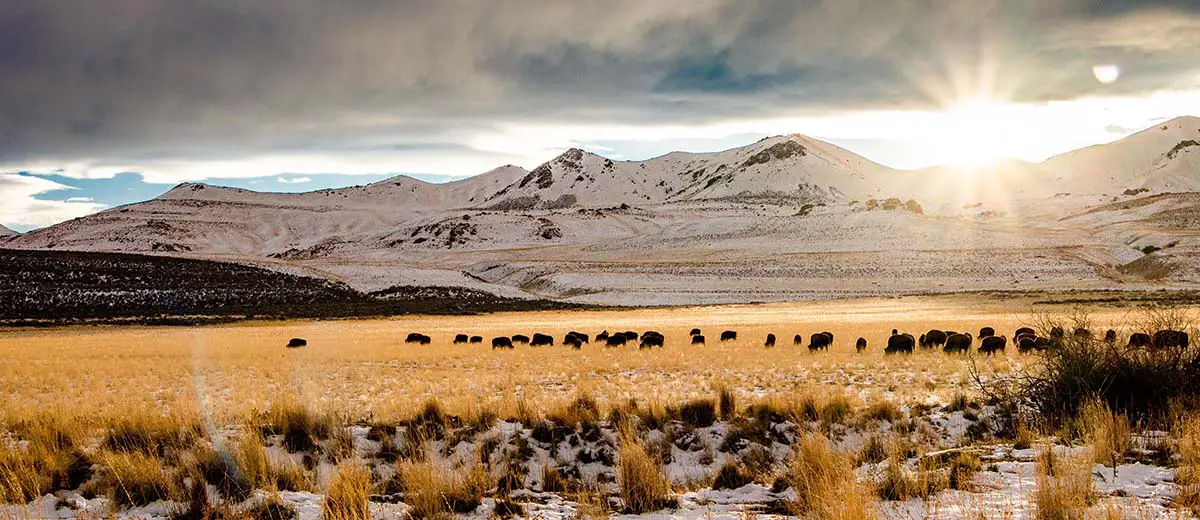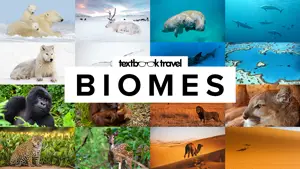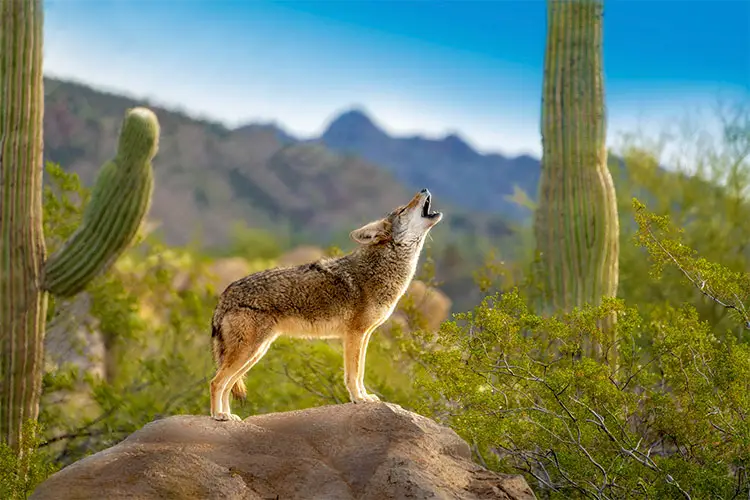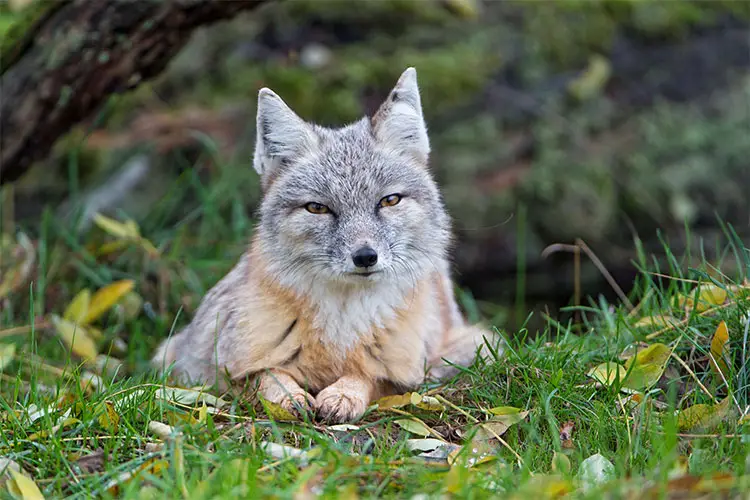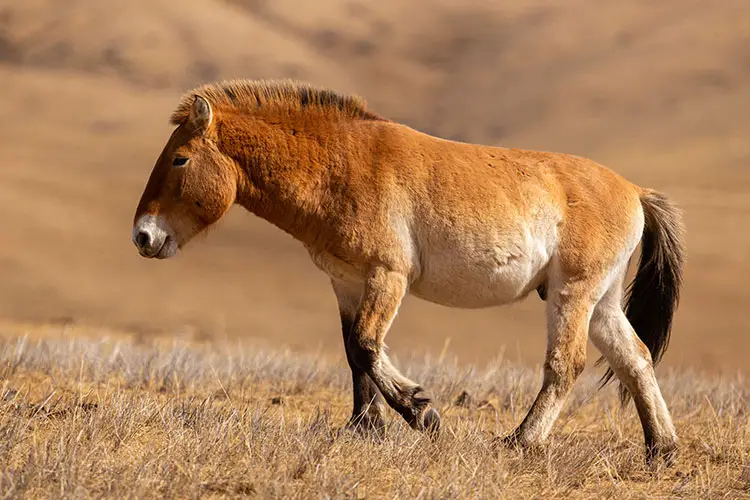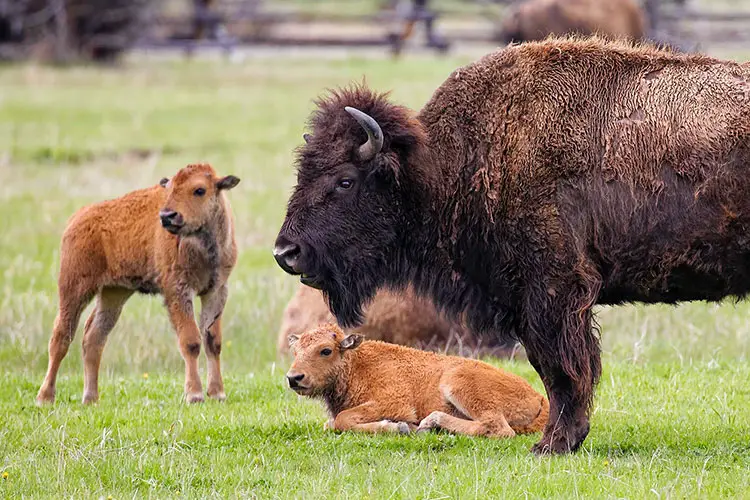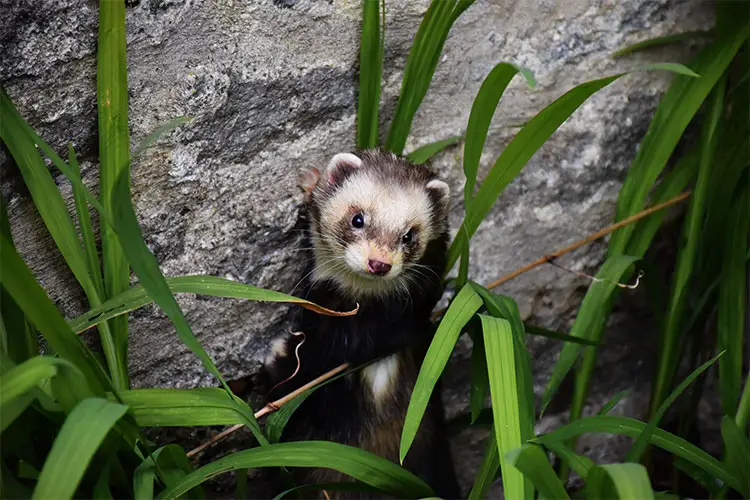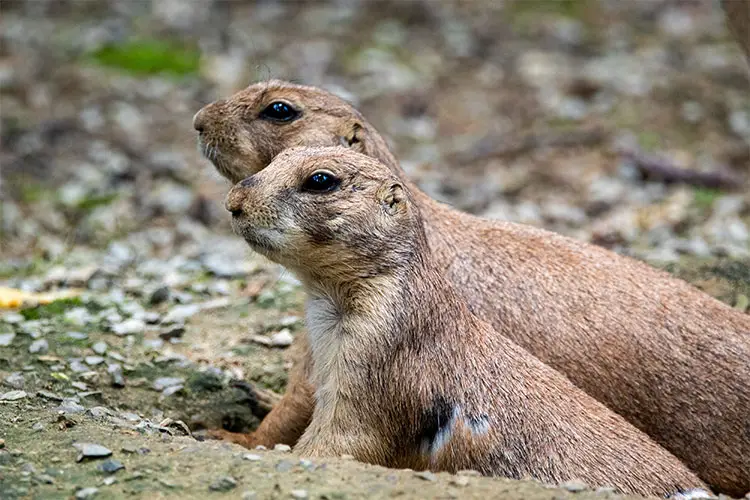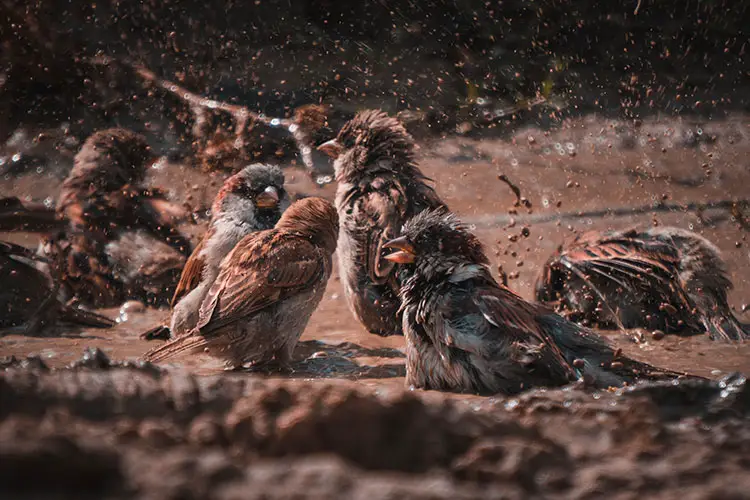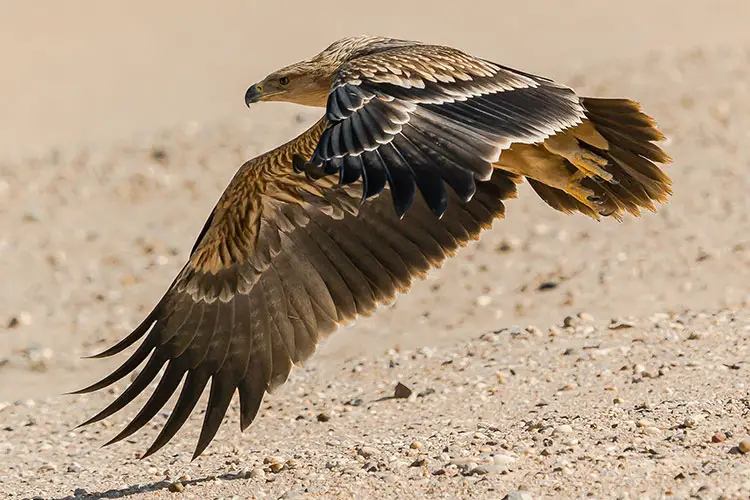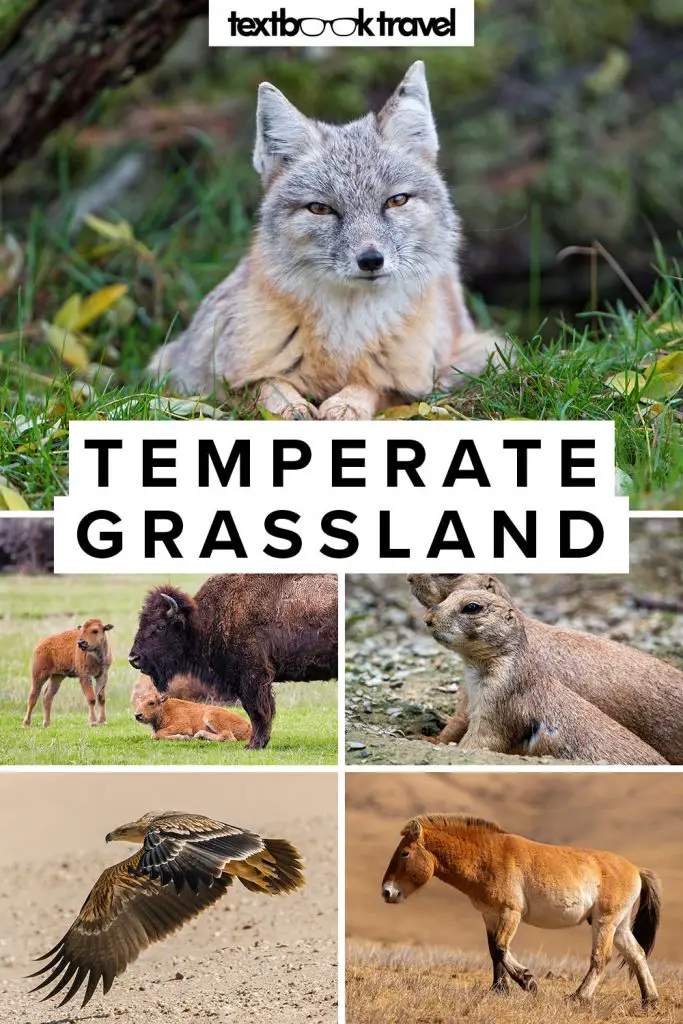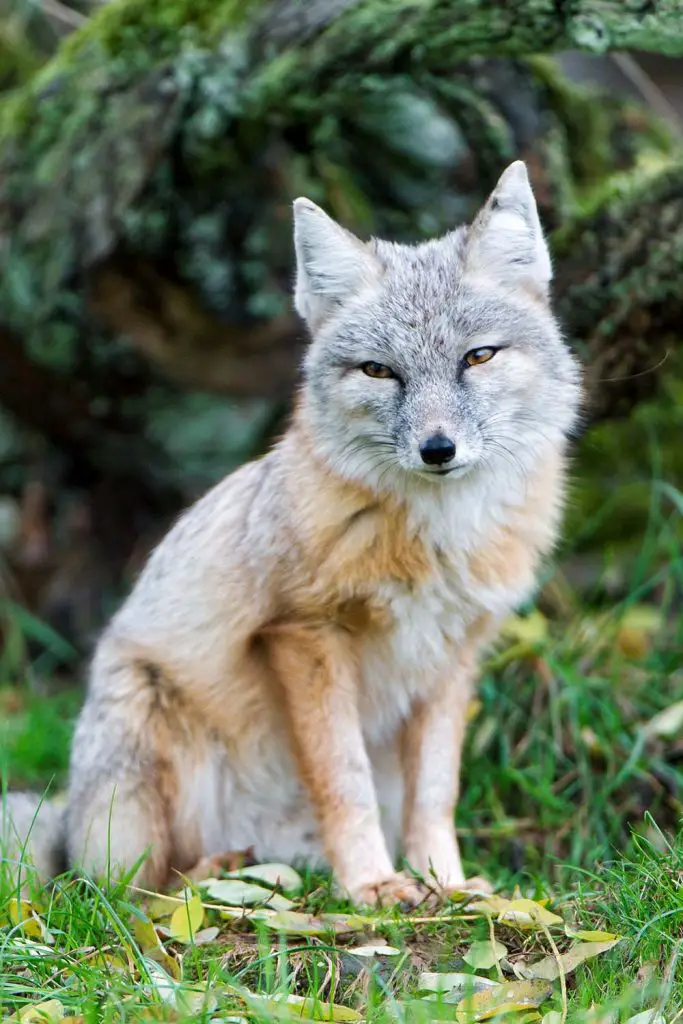Animals of the Temperate Grassland Biome
Known as steppe in Asia, prairie in North America, pampas in South America and veld in Southern Africa, temperate grassland sits at roughly the same latitude as the temperate forest biome. Temperatures here are much cooler than the savannah, which means this biome is less prone to fire, although they do occur and are important to biodiversity. The nights and winters in temperate grasslands are frigid and thanks to the lack of coverage, many of the animals here have thick fur to stave off the cold. You’ll see why in a second but if I could choose to live in any biome 10,000 years ago when we were hunter-gatherers, it would be temperate grassland!
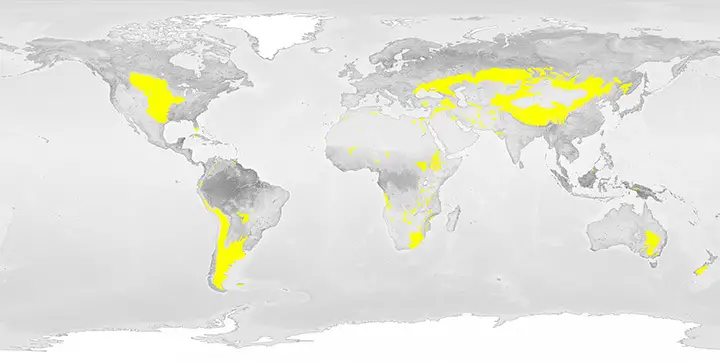
Temperate Grassland Facts
- Characteristics: Warm, low precipitation, foliage is mainly grass
- Temperature Range: -20°C / -4°F to 30°C / 86°F
- Precipitation: 500 to 900 millimeters / 20 to 35 inches of rain per year
- Vegetation: Various types of grass; wheat, barley, oats, prairie clover
Although there is some crossover of fauna from tropical grasslands in Africa, the largest predators that occupy the rest of the temperate grassland biome are coyotes, foxes and smaller felines such as the pampas cat. Coyotes are medium-sized canids that prey on smaller mammals such as deer, rabbits, hares and rodents as well as amphibians, fish and invertebrates. They are somewhat similar in appearance to a wolf but much smaller, with the average male weighing up to 20kg / 44lbs—grey wolves in Russia can weigh almost 80kg / 175lbs! The corsac fox is a majestic looking creature who inhabits the steppes of Central Asia. They occupy the middle of the food chain, being preyed upon by wolves, owls and eagles to name but a few.
Left – Howling Coyote standing on Rock with Saguaro Cacti & Right – Corsac fox lying in the grass Flickr: Tambako The Jaguar
The largest of the grazing animals to occupy this biome is the bison; these gigantic bovines can weigh up to 1,000kg / 2,200lbs and spend most of the day munching on grass. There are only two extant species: the American bison occupies the plains of North America, while the European bison is found on the steppe in Eurasia. Smaller grazers include gazelles, wild horses and guanacos, which are found in South America. The Przewalski’s horse—also known as the Mongolian wild horse—is a hardy species of horse found in Mongolia. Taxonomically, they are considered to be the last “wild” horse, separated from all other breeds of domestic horse, which are a single species.
Left – Przewalski’s Horse, Hustai National Park, Mongolia & Right – Plains bison with calves in Utah | Unsplash: Philip Brown
There are many smaller mammals who call the temperate grassland biome their home including polecats, weasels, mice, rabbits, skunks, badgers & prairie dogs. The black-footed ferret—also known as the American polecat—lives in the prairies of North America and almost exclusively feeds on prairie dogs. They are part of a larger family of polecats, which also includes the marbled polecat, steppe polecat and European polecat. Prairie dogs are part of the squirrel family (they’re not actually dogs!) and are vital to the ecosystems in which they live; as well as being an important part of many predators’ diets, many other animals use the burrows created by prairie dogs for nesting.
Left – The predator: the polecat Pixabay: u_3heuehh9 & Right – The prey: prairie dogs Unsplash: Joshua J Cotton
Blackbirds, sparrows and quails are some of the smaller birds that occupy this biome. The sparrow family is split into two main groups: old world sparrows and new world sparrows, which contain almost 200 species in total. The behaviour of sparrows differs from species to species; some are solitary creatures while others gather in flocks of up to 10,000 birds. Birds of prey including hawks, falcons, kestrels and eagles can also be found here, preying on small mammals, reptiles and other birds. The eastern imperial eagle can be found throughout much of Asia where it breeds in the grasslands of the north before migrating south for the winter.
Left – Sparrows taking a dust bath | Pixabay: Paul Steuber & Right – Eastern Imperial Eagle | WikiCommons: Irvin Calicut
Excuse me! Are you on Pinterest?! Here are a couple of pins! Right: Tambako The Jaguar on Flickr
